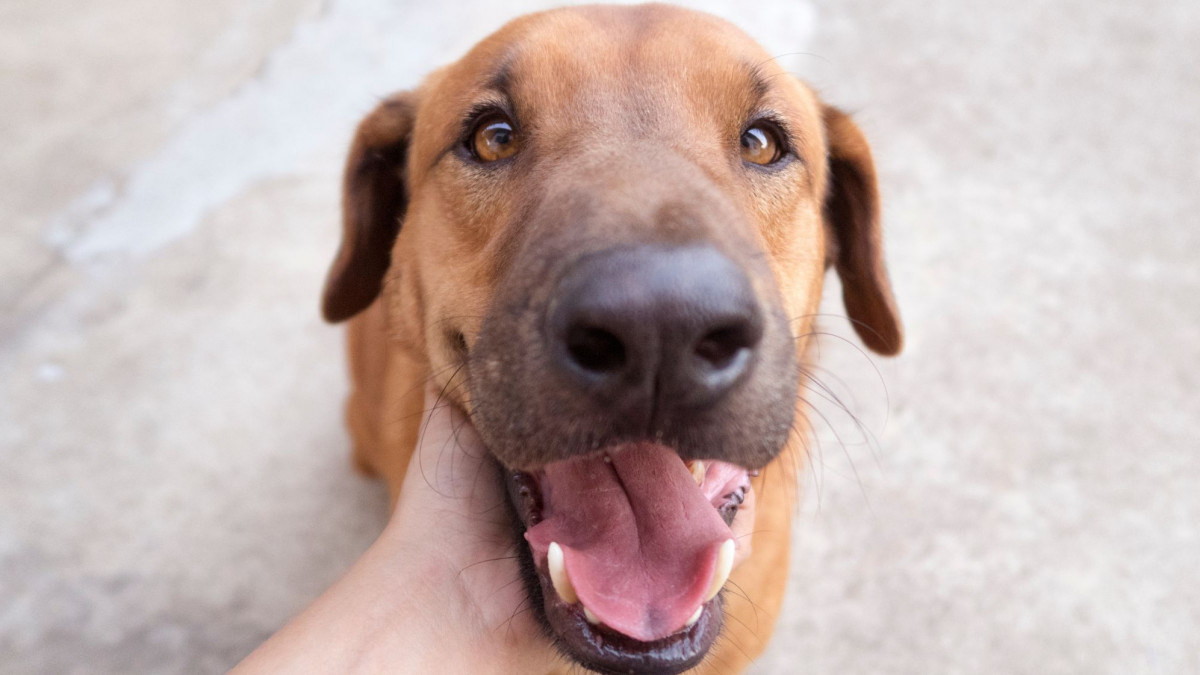For all the dogs who've touched our hearts
Handle with care!

Physical manipulation is a necessary part of most dogs’ lives, can we reduce the stress this puts them through?

Manhandle: To handle someone with force or push someone around, often when taking the person somewhere.
Manhandling a dog
Ask most people if they manhandle their dog and it's likely they'll say no, but you can’t drive down the street without seeing some poor dog being yanked by the lead or having his bum pushed into a sit at a street crossing.
Sometimes this is for safety, sometimes because we think it’s the right thing to do, and sometimes because we're embarrassed by our dog’s behaviour.
Regardless of why there are things we can learn and do to reduce the stress this puts them through.

Why do we manhandle our dogs?
Dogs and humans don’t speak the same language and don’t have the same behavioural conventions. We can teach young children to “say hello politely” by explaining with words and behaviour. They understand this, it's natural to them. Dogs however, don’t learn from us in this way and their ideas of “politeness” are completely different.
It's when these behavioural conventions clash that we get frustrated and use what we know to control our dogs, this is often done by grabbing and moving them by force – manhandling.


For dogs sniffing butts is polite: I am not sure how "polite" this was however... more of a sneak sniff I think!
Some common examples of manhandling include:
- Picking them up
- Dragging or yanking them around on lead
- Forcibly restraining them for grooming
- Pushing their bum down to make them sit,
- Pushing them into the car,
- Grabbing hold of the collar
Even overly rough patting can be a form of manhandling.
One of my lovely neighbours pounded “affectionately” on Rumble’s side and then proceeded to rub his fur up and down vigorously. Rumble was patient but not amused – yes, I should have stopped it, but it happened very quickly!

The problem with manhandling
Dogs typically have four ways of dealing with things that make them scared: they'll flee, fight, freeze or flirt. Anytime your dog is frightened or anxious, they'll go to one (or more) of these. All of these reactions can make it harder to live with your dog in the long run, and all of them indicate a damaging of the trust that's essential to relationships.
The dog may “submit” the first, second or even third time they're manhandled, but the repercussions will quickly be seen:
- Approach with the brush and the dog runs and hides (flee).
- Pick them up and they growl (fight).
- Call them inside for a bath but they dance around moving forward and away, body low and busy, finally ending up on the ground belly up (flirt).
- At the vet, the nurse holds them to take blood and they stand motionless, head stiff and eyes wide (freeze). On the next visit they refuse to walk in the door.

62f754ac2d2c6_lg.jpg)

Should we just because we can?
As sentient beings with their own individual emotions, dogs have a right to be treated with respect. They have no choice of where or with whom they live, we control their food, bedding, friends and fun, the least we can do is make their life as stress free as possible.
If we want good responses from our dogs, we need to enrich their trust in us. We can only do that by being trustworthy.

Handling our dogs is important
Of course it's not always simple. Being responsible for our dogs means doing things they would rather avoid. Dogs won’t take themselves to the vet, won’t cut their own nails or brush their own hair. It takes a lot of training to get them to walk past other dogs or the old chicken bone on the ground.
As they age, they may need to be picked up and helped to move around and they may need manipulation and physical therapy to stay healthy. If they're frightened, injured, young and/or learning they may need help to prevent them hurting themselves or others.
The truth is physical manipulation is a regular part of most dogs’ lives. We need to take steps to reduce the stress involved as much as possible.

Handle, not manhandle
Let’s aim to take the “man” out of manhandle (nothing personal gentlemen!)
Be calmer, softer, quieter. Communicate clearly by learning and listening. Teach ourselves and our dogs. Ask and encourage, don’t demand or force.
There are various levels of training you can do to reduce the need to manhandle your dog. What level you use will depend on ethics, knowledge, skill and commitment. It will also depend on the dog.
In the next blog I'll demonstrate some simple techniques you can use to reduce the need to manhandle, as well as share resources to more advanced training if that's of interest.

Resources
Vetted, The Four Fs of stress in pets
Does Your Dog REALLY Want to be Petted? Eileen and Dogs
Paw Education, Dog Behaviour and Training, Facebook Page
Set Yourself Up For Success: Make Training Easier delight in dogs!
Should You Use Food To Train Your Dog? delight in dogs!
You might also like



Comments



Categories: : Ethics, Health and welfare
Comments
Never miss a thing!

 Julie van Schie
Julie van Schie 



